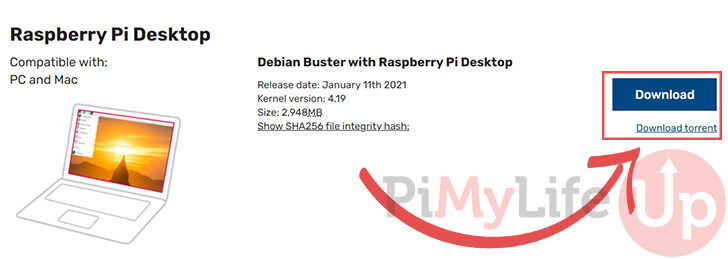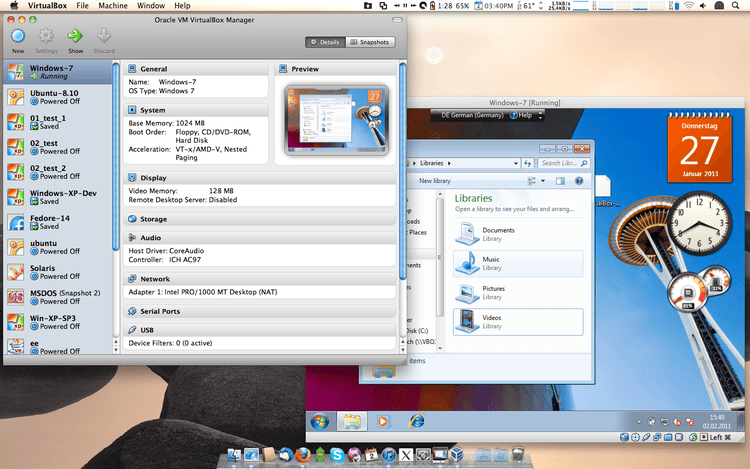At the time of writing, Multipass instances running with VirtualBox on MacOS won’t get assigned IP addresses. If you’d like to use VirtualBox, run the following in the terminal after installing Multipass: $ sudo multipass set local.driver=virtualbox. VirtualBox lets you run x86 virtual machines on an x86 processor. Raspbian is a distribution for ARM processors. Raspbian cannot run in VirtualBox. Raspbian is essentially Debian with binaries compiled to match the Pi's processor more closely than the official Debian binaries. So if you're going to your system in a virtual machine rather than. Right now (mid November 2020), for all practical purposes, no. While the OS and the hardware support virtualisation, you cannot currently run Virtual Box or similar virtualisation software on an ARM Mac. And more importantly, none of the commonly used guest operating systems can run on an ARM Mac. Apple’s M1 chip runs on ARM architecture that has been customized by Apple. So you cannot use it on the new Macs right now. In addition you cannot use VirtualBox to run a x86 OS on a ARM PC or vice versa. VirtualBox does not change what the CPU is other. Install VirtualBox. As stated before, for this tutorial I’ll use VirtualBox. You can download the.
Prerequisites
Hypervisor.framework / hyperkit
The default backend on macOS is hyperkit, wrapping Apple’s Hypervisor.framework. You need macOS Yosemite, version 10.10.3 or later installed on a 2010 or newer Mac.
VirtualBox

Multipass also supports using VirtualBox as a virtualization provider. You can download the latest version and check the requirements on the VirtualBox website.
At the time of writing, Multipass instances running with VirtualBox on MacOS won’t get assigned IP addresses.
If you’d like to use VirtualBox, run the following in the terminal after installing Multipass:
Installation
To install Multipass on macOS, you have two options: the installer package or brew:
Installer
Download the latest installer from our GitHub releases page - it’s the .pkg package.
If you want Tab completion on the command line, install bash-completion from brew first.
Activate the downloaded installer and it will guide you through the steps necessary. You will need an account with Administrator privileges to complete the installation.
There’s a script to uninstall:
Brew
Have a look at brew.sh on instructions to install Brew itself. Then, it’s a simple:
To uninstall:
First run
Once installed, open the Terminal app and you can use multipass launch to create your first instance.
With multipass version you can check which version you have running:
Have a look at Working with instances to quickly get off the ground!
Last updated 2 months ago.
Estimated reading time: 4 minutes
Welcome to Docker Desktop for Mac. This page contains information about Docker Desktop for Mac system requirements, download URLs, installation instructions, and automatic updates.
Download Docker Desktop for Mac:
By downloading Docker Desktop, you agree to the terms of the Docker Software End User License Agreement and the Docker Data Processing Agreement.
System requirements
Your Mac must meet the following requirements to successfully install Docker Desktop.
Mac with Intel chip
macOS must be version 10.14 or newer. That is, Mojave, Catalina, or Big Sur. We recommend upgrading to the latest version of macOS.
If you experience any issues after upgrading your macOS to version 10.15, you must install the latest version of Docker Desktop to be compatible with this version of macOS.
Note
Docker supports Docker Desktop on the most recent versions of macOS. That is, the current release of macOS and the previous two releases. As new major versions of macOS are made generally available, Docker stops supporting the oldest version and supports the newest version of macOS (in addition to the previous two releases). Docker Desktop currently supports macOS Mojave, macOS Catalina, and macOS Big Sur.
At least 4 GB of RAM.
VirtualBox prior to version 4.3.30 must not be installed as it is not compatible with Docker Desktop.
Mac with Apple silicon
You must install Rosetta 2 as some binaries are still Darwin/AMD64. To install Rosetta 2 manually from the command line, run the following command:
For more information, see Docker Desktop for Apple silicon.

What’s included in the installer

The Docker Desktop installation includes Docker Engine, Docker CLI client, Docker Compose, Notary, Kubernetes, and Credential Helper.
Install and run Docker Desktop on Mac
Double-click
Docker.dmgto open the installer, then drag the Docker icon to the Applications folder.Double-click
Docker.appin the Applications folder to start Docker. (In the example below, the Applications folder is in “grid” view mode.)The Docker menu in the top status bar indicates that Docker Desktop is running, and accessible from a terminal.
If you’ve just installed the app, Docker Desktop launches the onboarding tutorial. The tutorial includes a simple exercise to build an example Docker image, run it as a container, push and save the image to Docker Hub.
Click the Docker menu () to seePreferences and other options.
Select About Docker to verify that you have the latest version.
Virtualbox On Arm

Congratulations! You are now successfully running Docker Desktop.
Virtualbox Arm Mac
If you would like to rerun the tutorial, go to the Docker Desktop menu and select Learn.
Automatic updates
Starting with Docker Desktop 3.0.0, updates to Docker Desktop will be available automatically as delta updates from the previous version.
When an update is available, Docker Desktop displays an icon to indicate the availability of a newer version. You can start downloading the update in the background whenever it is convenient for you.
After downloading the update, all you need to do is to click Update and restart from the Docker menu. This installs the latest update and restarts Docker Desktop for the changes to take effect.
Uninstall Docker Desktop
To uninstall Docker Desktop from your Mac:
- From the Docker menu, select Troubleshoot and then select Uninstall.
- Click Uninstall to confirm your selection.
Important
Uninstalling Docker Desktop destroys Docker containers, images, volumes, andother Docker related data local to the machine, and removes the files generatedby the application. Refer to the back up and restore datasection to learn how to preserve important data before uninstalling.
Where to go next
- Getting started provides an overview of Docker Desktop on Mac, basic Docker command examples, how to get help or give feedback, and links to other topics about Docker Desktop on Mac.
- Docker Desktop for Apple silicon for detailed information about Docker Desktop for Apple silicon.
- Troubleshooting describes common problems, workarounds, howto run and submit diagnostics, and submit issues.
- FAQs provide answers to frequently asked questions.
- Release notes lists component updates, new features, and improvements associated with Docker Desktop releases.
- Get started with Docker provides a general Docker tutorial.
- Back up and restore data provides instructionson backing up and restoring data related to Docker.

